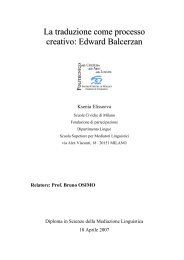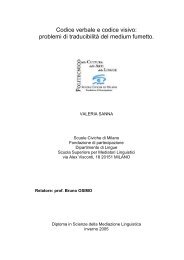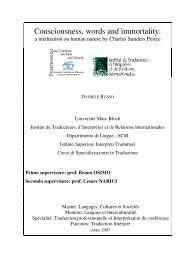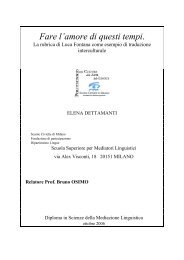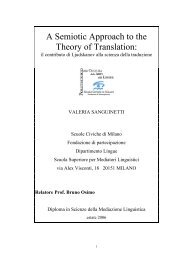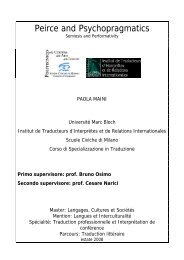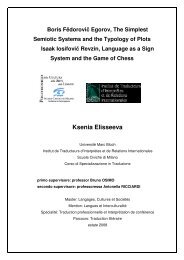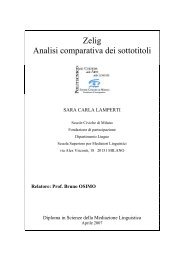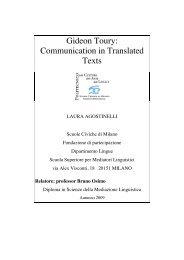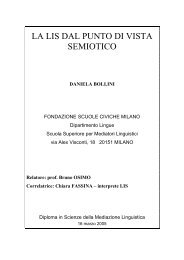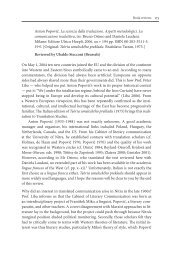Alice in Wonderland - Bruno Osimo, traduzioni, semiotica della ...
Alice in Wonderland - Bruno Osimo, traduzioni, semiotica della ...
Alice in Wonderland - Bruno Osimo, traduzioni, semiotica della ...
Create successful ePaper yourself
Turn your PDF publications into a flip-book with our unique Google optimized e-Paper software.
The last aspect I would like to mention is annotation. Notes are meta-<br />
texts, and meta-texts are usually referential. In <strong>Alice</strong> <strong>in</strong> <strong>Wonderland</strong>, the<br />
notes <strong>in</strong>form the reader about the appellative function(s) of the orig<strong>in</strong>al.<br />
The problem with the explanation of puns or jokes is that it kills them: a<br />
joke that has to be expla<strong>in</strong>ed is as dead as a Dodo. Moreover, the reader<br />
receives two texts, i.e., a text where the names seem to be purely<br />
identify<strong>in</strong>g or referential, and another text that expla<strong>in</strong>s why these names<br />
are not purely referential. This procedure will necessarily change the whole<br />
communicative effect of a text. To my view, the decision for, or aga<strong>in</strong>st,<br />
annotations must be guided by addressee-orientation. For an adult<br />
readership, it may be <strong>in</strong>terest<strong>in</strong>g to read the two texts, either “side by side”<br />
or one after the other. For children, one text will probably be sufficient.<br />
Consequently, <strong>in</strong> our corpus, annotations and translators’ commentaries are<br />
only found <strong>in</strong> the translations for adults (DE-ENZ and ES).<br />
67



